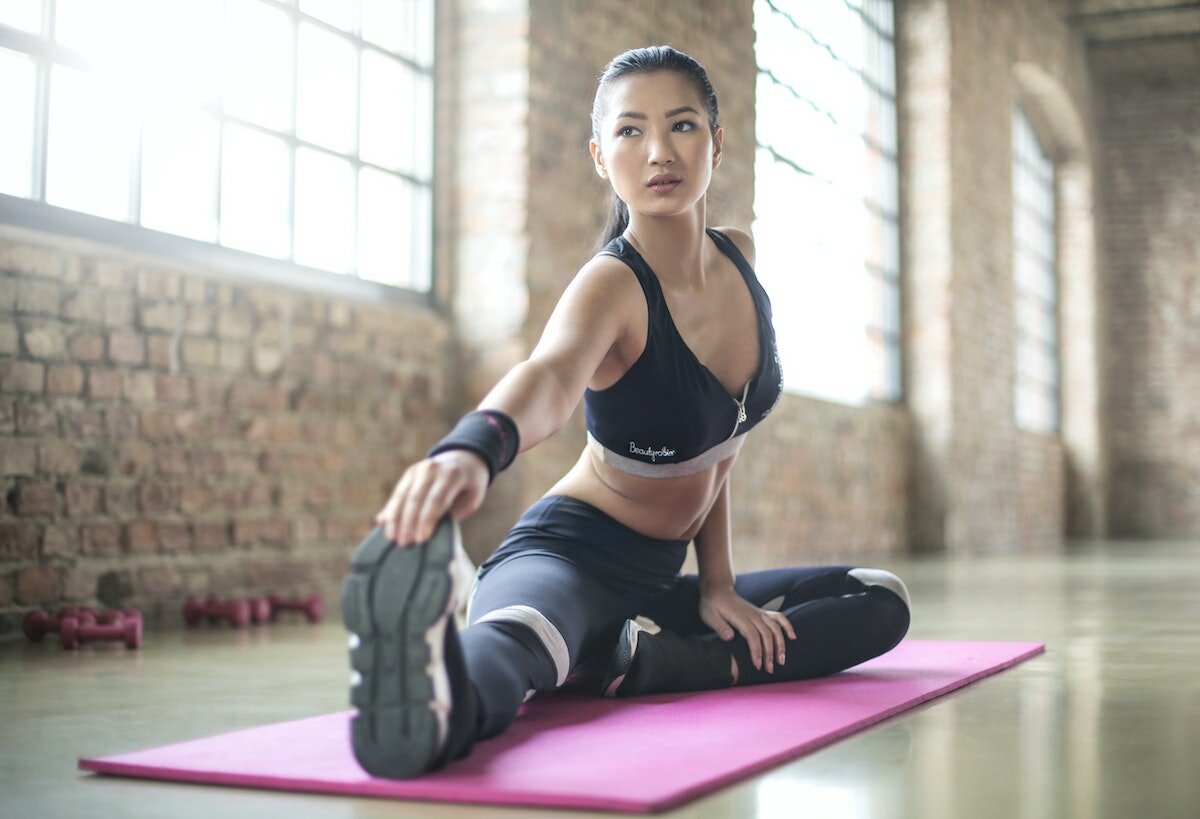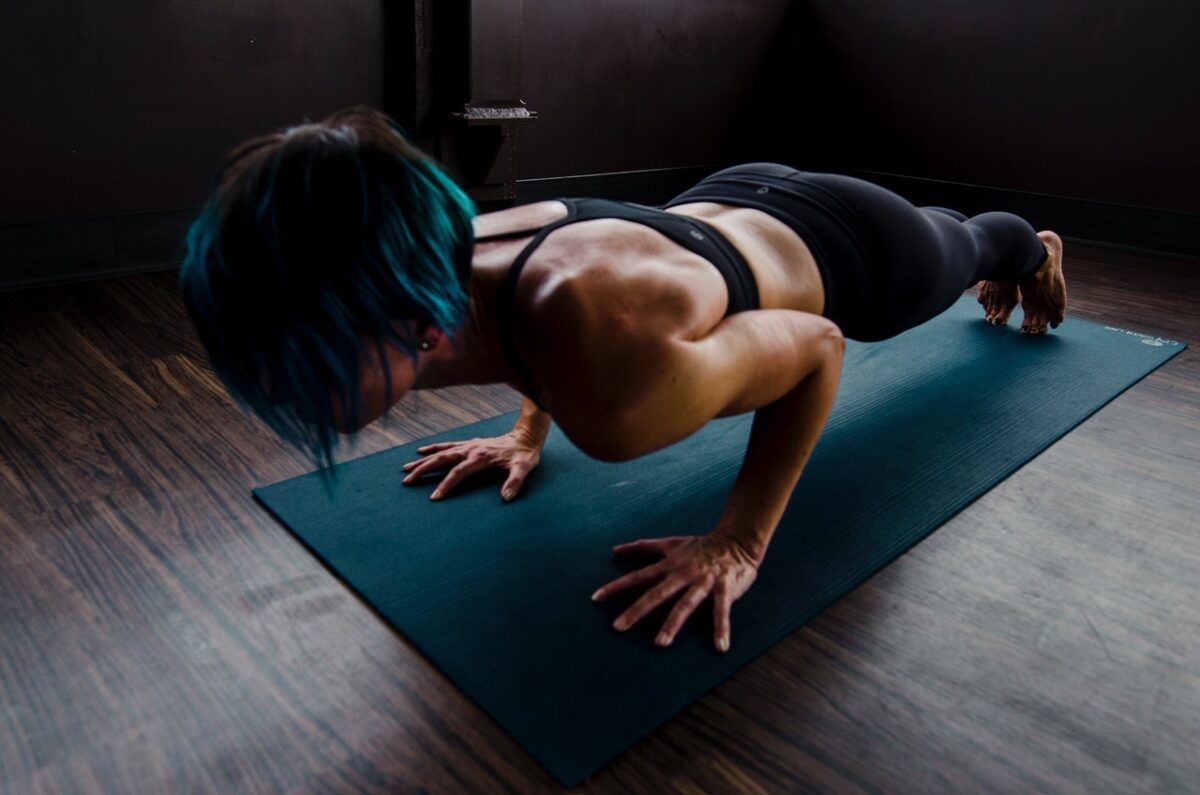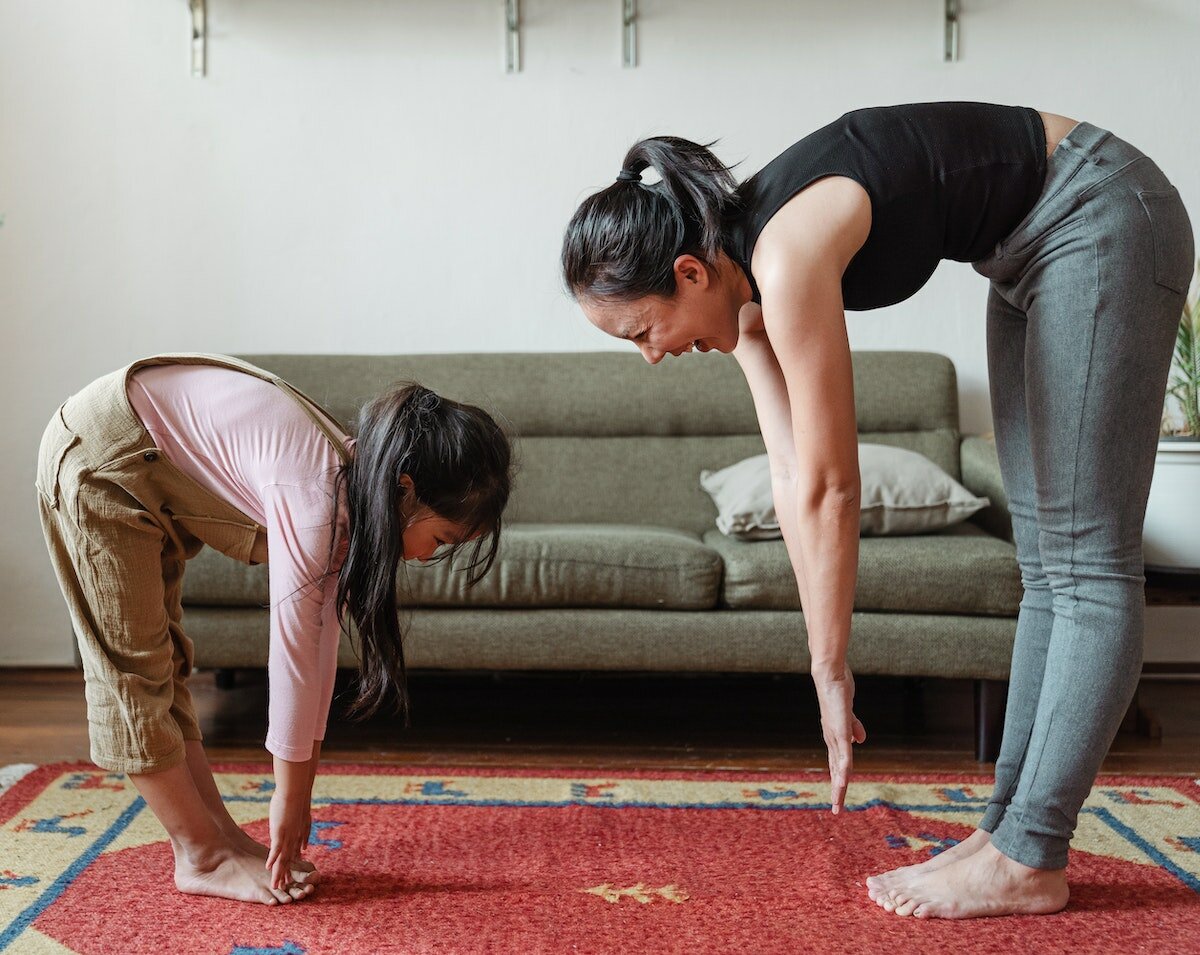As life continues with busy schedules and a never-ending to-do list lingers, we know how difficult it may be to consistently make time for exercise. Knowing a few stretches for flexibility and strengthening exercises can be a game-changer for your health if you’re able to squeeze a few into that busy schedule.

It’s important to keep in mind that our low back is the foundation of our body’s capabilities. If you’re looking to quickly, yet effectively, add a few flexibility exercises to improve posture, core stabilization, and increase lumbar strength, as well as flexibility, try these gentle stretches for flexibility and exercises that can be done in the comfort of your own home.
Some people choose to perform a combination of these stretches for flexibility before getting out of bed in the morning, while others prefer to complete them at night, or even mid-day on a yoga mat. A simple routine can be tailored to what works best for your schedule.
Read More: Why Moms Need Exercise
Ideally, it’s recommended to begin with stretches for flexibility first to stimulate an improved muscle response to warrant the best joint positioning during contractions when following with an exercise.
6 Stretches for Flexibility

Lumbar rotations – This is a fantastic way to begin warming up the body prior to performing your stretches for flexibility.
Lie down on a flat surface; bed or floor, keeping your knees bent and feet flat on the floor. Start by comfortably lowering both knees to one side rocking them back and forth. You want to keep your back in contact with the floor repeating the rocking motion for roughly 1 min 3x.
Single and double knee to chest – This is a great way to introduce a gentle stretch to your lower back musculature.
- Single Knee to Chest
- Lie flat on your back and keep one leg in a relaxed position, bring your other knee as close to your chest as possible, using your hands either over the top of your knee or underneath your thigh maintaining a gentle pull towards your chest. Hold this position for 30 seconds and then proceed to the other side.
- Double Knee to Chest (progression from single knee to chest)
- Like single knee to chest, you would simply prop up both knees and then grab underneath both thighs pulling your knees towards your chest holding that stretch for 30 seconds.
Pelvic Tilts – These are very subtle, yet effective spinal movements that will gently stretch your low back correcting the lumbar alignment.
Anterior, meaning towards the front, pelvic tilts are extremely common and affect the majority of the population. Anterior pelvic tilts commonly lead to:
- Low back pain and tightness
- Tightness in hamstrings
- Misaligned posture
In order to correct an Anterior Pelvic Tilt, you’ll need to perform Posterior Pelvic Tilting as an exercise to help correct spinal alignment.
Begin with lying flat on your back with your knees bent and feet flat on the floor, tightening your abdominal muscles and rolling your pelvis back by pushing your lower back towards the floor. Repeat 10-15 times.
If you need some reassurance you’re performing the posterior pelvic tilt correctly, place your hand on your low back and flatten your back to squeeze your hand to ensure proper form for each repetition.
If you feel you suffer from anterior pelvic tilting, which may be a significant factor contributing to your low back pain and tightness, abdominal strengthening is the most effective treatment for correcting it. If you’re unsure where to begin, a physical therapist can provide a targeted exercise plan tailored to you and suggest the best beginner stretches for flexibility.
Read More: 5 Safe Hip Stretches to Help with Pregnancy
Hamstring Stretching
Increased tightness in your hamstring muscles can contribute to increased stress on the lower back by pulling too much on your ischial tuberosities, which is an area on your pubic bone, and this may lead to creating an unwanted tilt in your pelvis.
As you focus on stretches for flexibility, one of the major muscle groups to target are the hamstrings. There are various ways to stretch this muscle group, we will include a couple of the most common and effective ones below.
- Seated Hamstring Stretch: Sit on a yoga mat, bed, or floor with both legs straight out in front of you. Adjust your pelvis as you sit upright, and maintain an erect posture through your spine. Begin by slowly leaning forward with hands on your thighs, working your hands down toward your shin bones, and progressing down towards your feet. Breathe deeply as you slowly work yourself into this stretch. If your knees are bent at first, there is no shame, no stretch should be forced, we all start somewhere.
- Standing Hamstring Stretch: Begin by standing in a neutral position, slowly bend your body forward and reach towards your shins or ground. As you lean forward reaching for your legs or floor, your knees will bend. Slowly straighten your legs until your feel a comfortable stretch in your hamstrings. Hold and breathe, roughly 30 sec 3x.
Figure Four Piriformis Stretch
The piriformis is a flat muscle deep in the gluteal (buttock) muscles. One way to stretch this muscle is lying on your back with both knees bent, crossing over one leg to the other side creating a figure four, then grab ahold underneath the thigh pulling the knee towards you, lifting your foot off the floor. Hold that stretch roughly 30 sec 3x to each side.
Cat-Cow Stretch
This stretch requires you to be on your hands and knees. We broke this one down into 5 simple steps. Feel free to place a towel under your knees or perform this on a yoga mat for increased comfort.
- Hands should be aligned under your shoulders and knees should be aligned under your hips.
- Slowly arch your back dropping your stomach towards the floor, inhale during this process, while simultaneously raising your head and chest up.
- Hold this stretch for roughly 3 seconds.
- Then exhale while slowly rounding your back towards the ceiling and dropping your head and tailbone.
- Hold this position for another 3 seconds.
Repeat these steps 5-10 times, to tolerance, take your time to effectively inhale and exhale while transitioning into each position.
6 Effective Lumbar Strengthening Exercises

Improved pelvic stability and posture are key components that contribute to a pain-free low back.
Glute Bridge
Strong glutes will contribute to improved pelvic stability, hence a strong support low back. Bridging works the large muscle in your buttocks and this exercise will not only reduce back pain, but it will boost flexibility and improve balance, as well as posture.
- The bridge exercise is performed by lying on your back, bending your knees with arms by your side, palms down. Keep knees shoulder-width apart. Push through your heels to lift your bottom off the floor, squeezing your bottom and core to create a straight line from shoulders to hips. Hold for 3 seconds, then lower the bottom down to starting position.
- Repeat 10-20x.
Superman Exercise
Strong back extensors play a vital role in maintaining good posture, these muscles run along both sides of the spine.
- Lie face down with your legs straight and your arms stretched out in front of you, palms down.
- Simultaneously raise both legs and both arms up creating a bowl-like shape with your body, aim to reach about 6in off the floor.
- Keep your head in a neutral position by looking at the floor to avoid placing any strain on your neck.
- Hold this position for a few seconds and slowly lower back to starting position.
* It’s important to keep your head in a neutral position, keeping it in line with your spine while performing this exercise.
Bird Dog
The bird dog is a simple exercise that will improve stability, promote a neutral spine, and alleviate back pain. Executing this pose targets to strengthen the core, hips, and back muscles which will increase range of motion, improve posture, trunk control, and core stabilization.
This exercise requires you to be on all fours, like the cat-cow stretch by keeping hands aligned under the shoulders and knees under your hips. It’s IMPORTANT to keep looking towards the floor, this will keep your head neutral position during each repetition. Avoid looking up.
- Once you’re on all fours and looking towards the floor, simultaneously point one arm straight out in front of you while kicking out the opposite leg. Keep your hips as straight as possible, square to the ground.
- Hold a few seconds and return to starting position keeping your abs engaged the entire time to avoid any compensation and maintain stability.
- Alternate each side.
- Work towards 10 repetitions each, begin with 5 reps totaling 10 reps as a starting point if needed until you feel comfortable enough to progress.
NOTE: If the bird dog pose is difficult, you may also raise one upper extremity or lower extremity at a time. If you find yourself losing balance or notice too much rotation in the hips during repetitions, then take it down a notch to lift either one arm or one leg up at a time until you progress into a full bird dog pose. Proper form is crucial during exercise to strengthen your low back effectively and safely.
Partial Crunches
Strengthening your core will contribute to improved support for your lower back and pelvic stability. Weak abdominals cause your low back musculature to compensate, which will, in turn, provoke fatigue creating hip instability and poor posture.
- Lie on your back, with knees bent and feet flat on the floor.
- You may keep your arms by your side with palms up or cross your arms over your shoulders.
- As you elevate your shoulders up, keep your chin up towards the ceiling. Avoid tucking your chin to maintain a lengthened position to keep a proper crunch technique.
- A partial crunch done correctly, is safe, but yet very effective.
Forearm Plank
One of the most common, but best exercises to banish low back pain. They are a foundational move because your muscles must work by resisting movement rather than creating movement. Planks will strengthen your core and back musculature simultaneously. They are more difficult than they appear since you’re taking away points of contact with the ground once elevating your body into the correct form.
- Place forearms on the floor with elbows aligned below the shoulders and your arms parallel to your body.
- Then pop up on your toes, keeping your body in a straight line from head to toe.
- Maintain a stable firm position the entire time by engaging your core. It may help to think of pulling your belly button towards the ceiling.
- Keep eyes down on the ground to maintain a neutral spine.
- While in the plank position, focus on squeezing your shoulder blades together to avoid rounding your back.
- Your hips should remain aligned with your shoulders.
- Try to relax your hands, and avoid gripping onto the floor.
- And, finally, breathe.
Work towards progressing yourself to 1 min holds, beginning with a 15 or 30-second hold is a great start!
Lateral Leg Lifts
This exercise focuses on strengthening the outside of our hips, known as our hip abductors, they play an important role in providing hip stability. Weak hip abductors can alter the hips’ position, which could influence the muscles that support low back spinal alignment.
- Simply lie on your side with both legs extended out, feet perpendicular to your legs, and hips directly on top of the other.
- Keep your head in line with your spine, bend your elbow, and allow your head to rest on your forearm.
- Raise your upper leg just above your hip joint and hold that position for 1-2 seconds.
- Slowly lower your leg back to starting position.
- Repeat 20x performing a controlled contraction with each repetition.
- Flip over to the opposite side and repeat the process 3x to each side.
Read More: 10 Best Fitness Apps
Stretching and strengthening your low back is essential to keep your spinal joints free of restriction; both will contribute to preventing injury, promote stability of the spine, and improve your posture. Moms are truly superheroes; we work, we’re a chef, a nurturer, a teacher, a housekeeper, and financial managers all while doing our best to stay present in the moment with our kids. Remember to take time for yourself, and nurture your own body by investing in your health to keep up with those busy schedules while remaining pain-free.
CONNECT WITH DAILY MOM
💖 NEWSLETTER: DAILY READS IN YOUR INBOX 💖
Sign up to receive our picks for the best things to do, see and buy so you can relax and focus on more important tasks! Let us help you be the best version of yourself you can be!
BE SOCIAL WITH US
📌 LOVE IT? PIN IT!📌











































